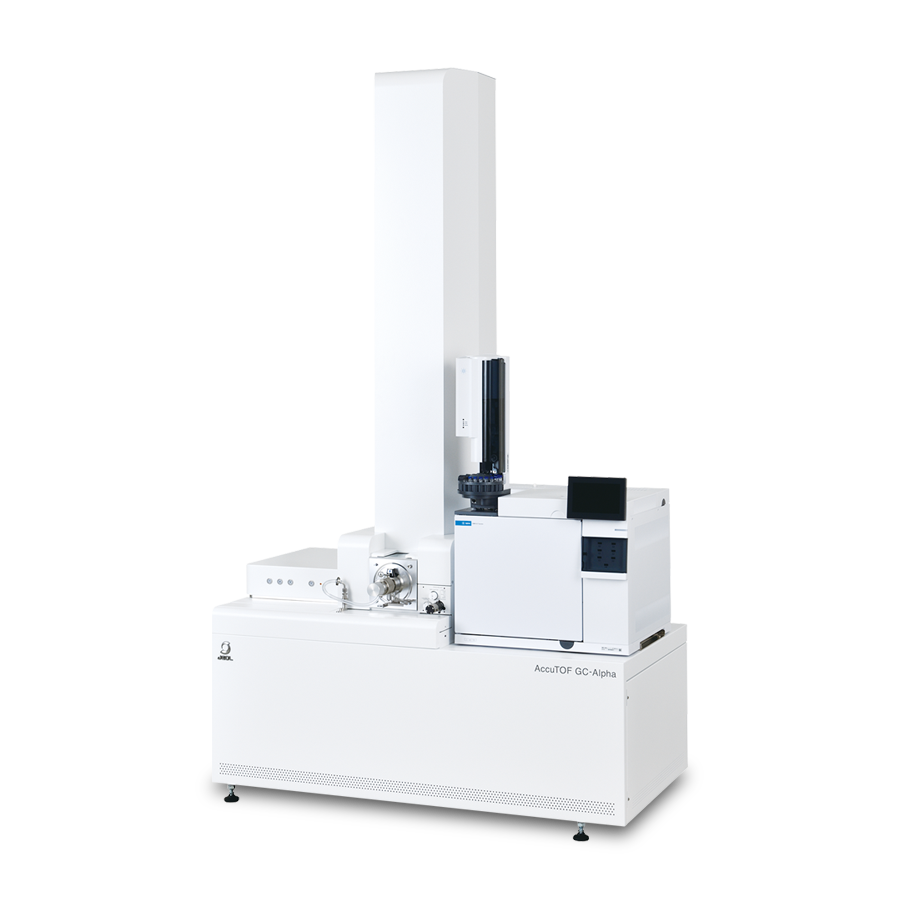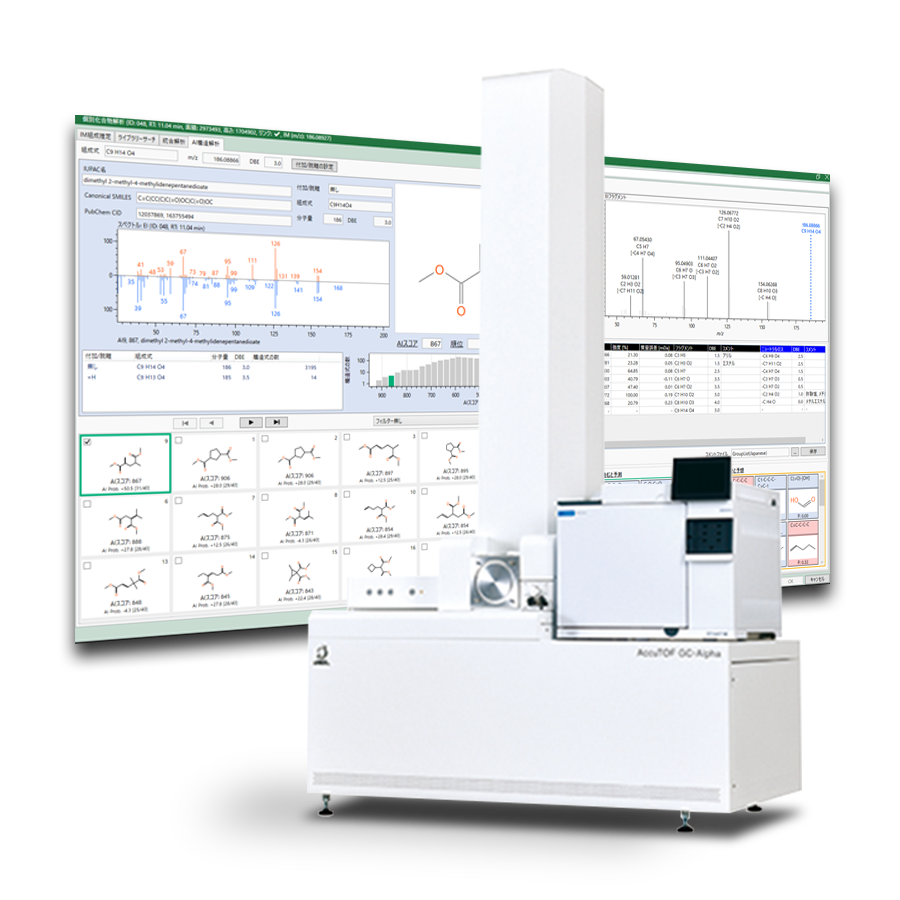Analysis of aroma components in Japanese sake by HS-SPME-GC-TOFMS
MSTips No. 465
Introduction
Japanese sake is an alcoholic drink brewed from rice, koji, and water with Japanese traditional manufacturing method. The taste and aroma of sake depend on the raw materials and manufacturing method. For example, honjozo-sake has a mild flavor, and ginjo-sake has a fragrant and fruity flavor. In this MSTips, we measured and compared the aroma components in sake samples. A HeadSpace-Solid Phase MicroExtraction-Gas Chromatography-Time-Of-Flight Mass Spectrometry (HS-SPME-GC-TOFMS) was used for measurement. In HS-SPME, a sample is sealed in a headspace vial, and the SPME fiber is exposed to its gas phase to adsorb volatile components. Highly sensitive analysis is possible by easily extracting and concentrating volatile components. In addition to this HS-SPME, the GC pretreatment autosampler HT2850T (HTA S.R.L.) can also handle liquid injection and HS-gastight syringe injection by replacing the syringe attachment. JMS-T2000GC and msFineAnalysis AI, which are effective for compounds not registered in NIST database, were used as GC-TOFMS and analysis software.
Experiment
Commercially available honjozo-sake and ginjo-sake were used as samples. 10 mL of each was sealed in a 20 mL headspace vial (Figure 1). HS-SPME extraction was performed at 40℃ for 30 minutes using HT2850T, and EI/FI measurement was performed using JMS-T2000GC (Figure 2). EI measurements were repeated three times for each sample, and qualitative analysis and statistical difference analysis were performed using msFineAnalysis AI. Table 1 shows detail of measurement conditions.

Figure 1 Sake samples
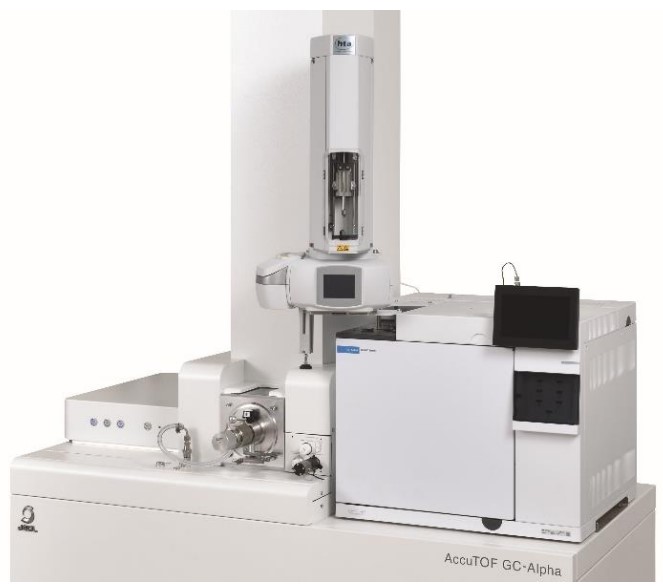
Figure 2 JMS-T2000GC with HT2850T autosampler
Table 1 Measurement conditions
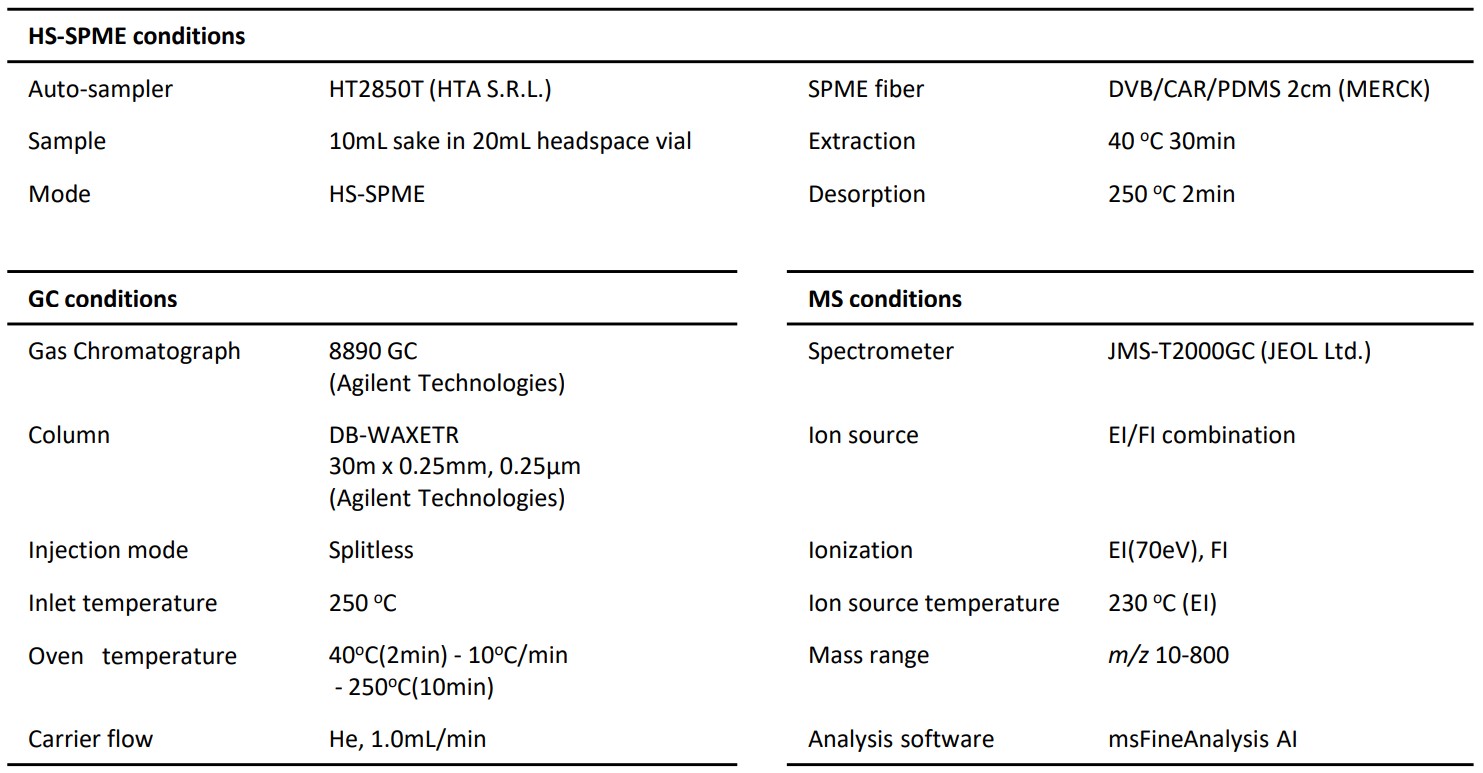
Results
Figure 3 shows the TIC chromatograms of honjozo-sake and ginjo-sake. In honjozo-sake, ethanol, isoamyl acetate (ginjo aroma, melon-like), and phenylethyl alcohol (basic sake aroma, rose-like) were detected. In ginjo-sake, ethyl caproate (ginjo aroma, apple-like) was strongly detected.
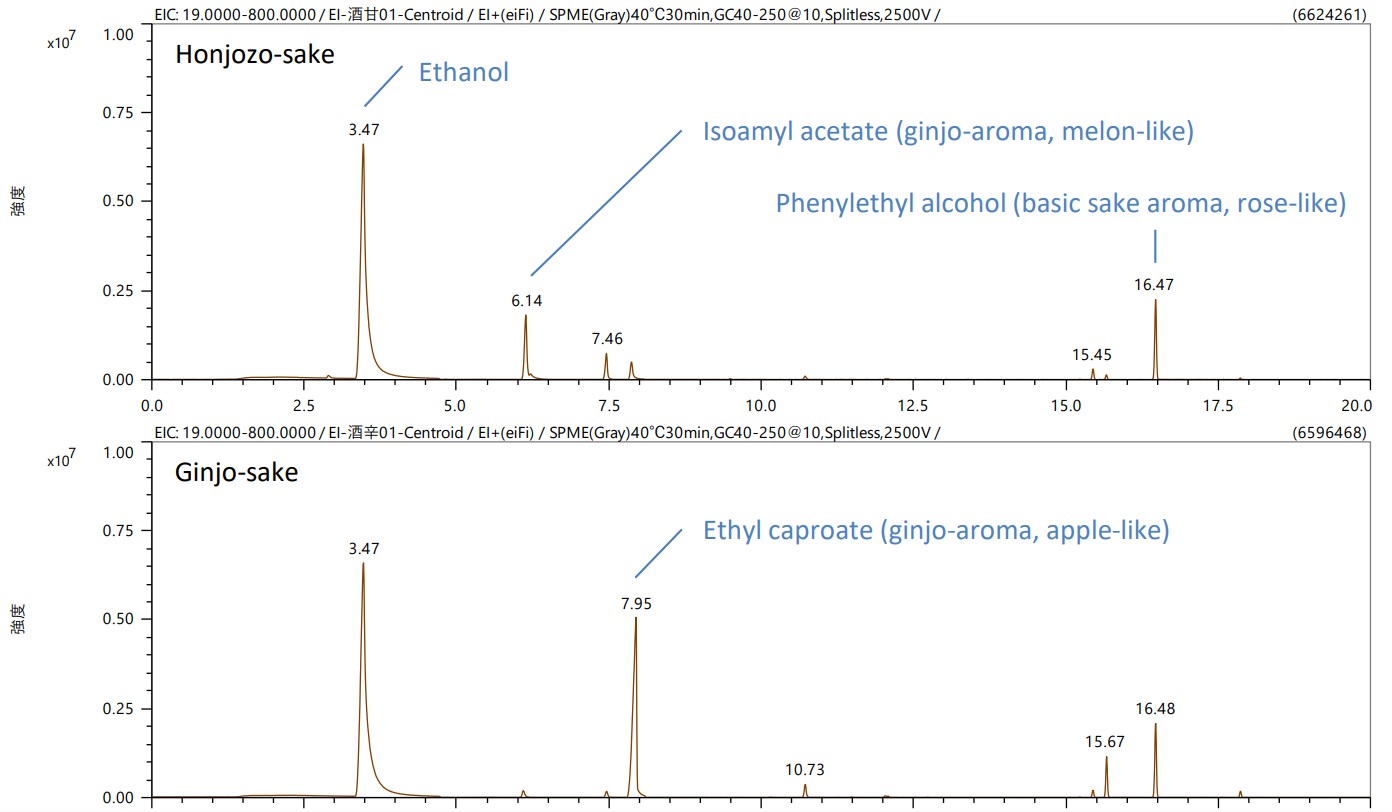
Figure 3 TIC chromatograms of honjozo-sake and ginjo-sake
Figure 4 shows the results of a difference analysis between honjozo-sake and ginjo-sake using msFineAnalysis AI. In 22 peaks with an intensity ratio of up to 0.1% to the maximum peak, 5 peaks were strongly detected in honjozo-sake, and 11 peaks were strongly detected in ginjo-sake. From the volcano plot obtained by statistical difference analysis, it was possible to visually confirm the characteristic components of each sample.
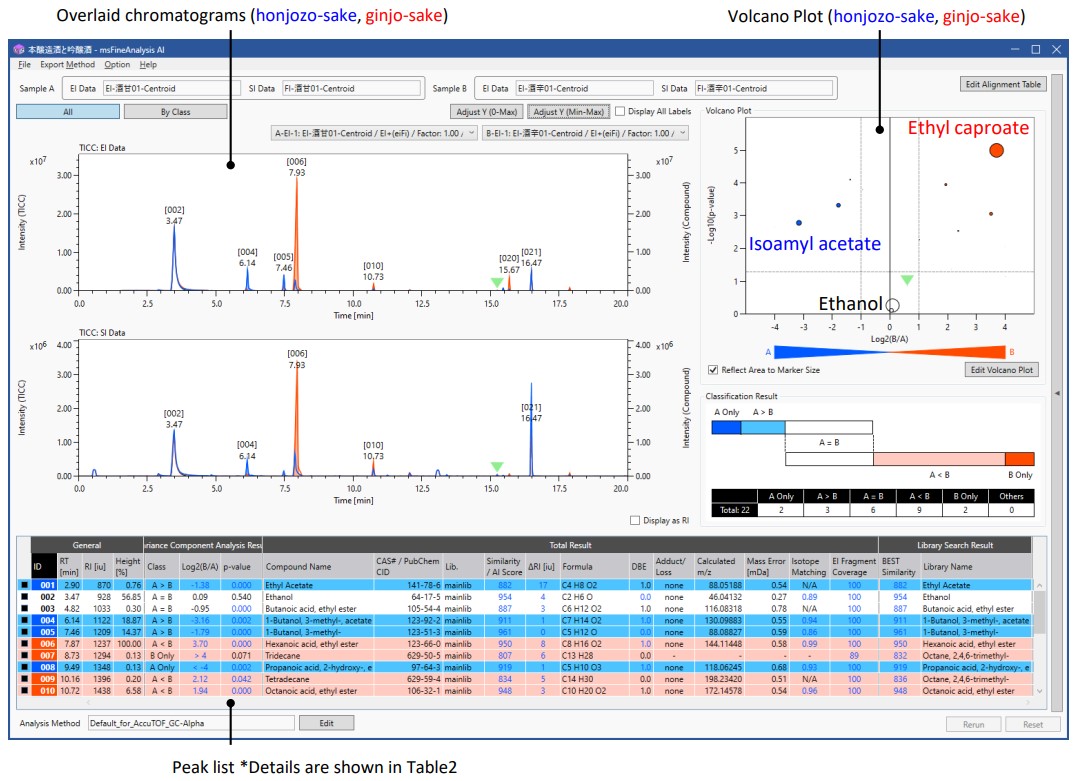
Figure 4 Difference analysis result between honjozo-sake and ginjo-sake
Table 2 shows the peak list. The background color reflects the intensity differences between samples. Although ID018 was compound not registered in NIST database, its compound name and structural formula were able to obtain by AI structural analysis.
Table 2 Peak list of difference analysis result
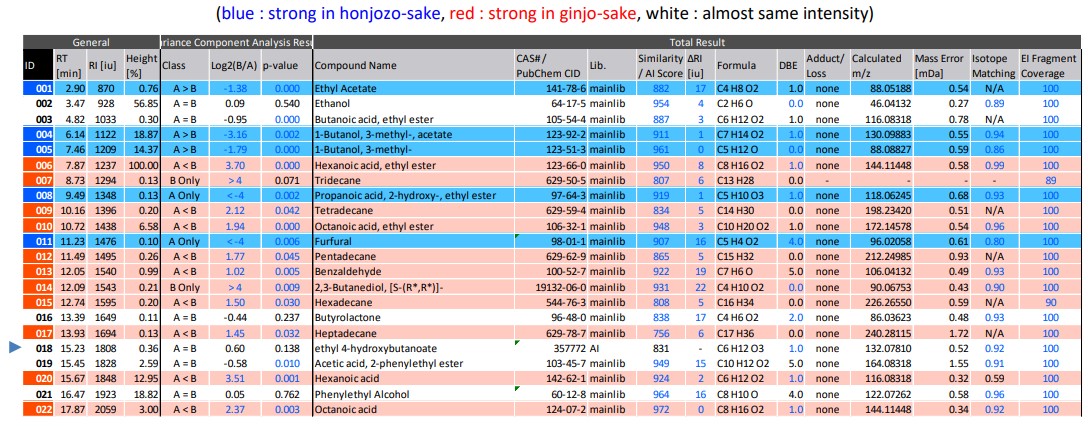
Figure 5 shows the candidate structural formula of ID018 obtained by AI structural analysis. Ethyl 4-hydroxybutanoate, which has a caramel-like aroma, was obtained as a top candidate (2nd /1155 candidates).
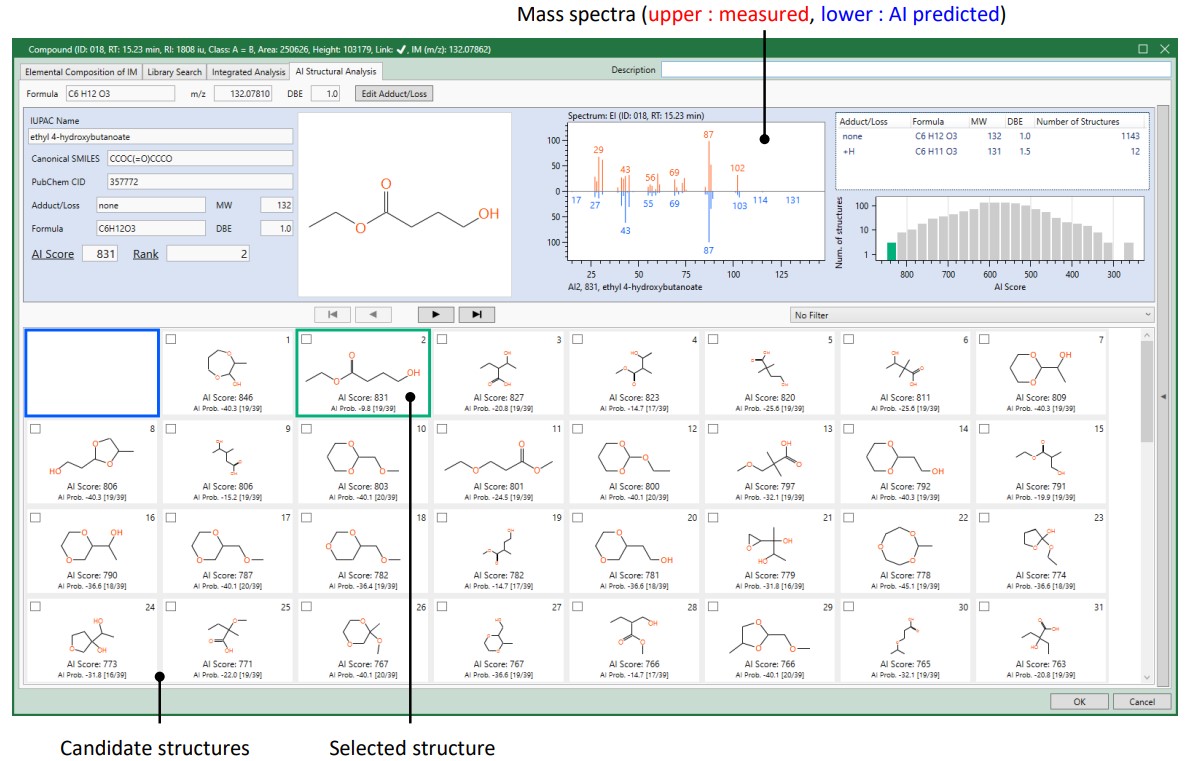
Figure 5 AI structure analysis result of peak ID018
Conclusion
It was able to detect aroma components in sake with high sensitivity by HS-SPME-GC-TOFMS using HT2850T and JMS-T20000GC. And it was able to visually confirm the characteristic components of each sample by volcano plot using msFineAnalysis AI. Although some components were not registered in NIST database, it was able to obtain the compound name and structural formula by AI structural analysis. So, it was confirmed that these devices and software are effective for analyzing aroma components in foods.
Solutions by field
Related products
Are you a medical professional or personnel engaged in medical care?
No
Please be reminded that these pages are not intended to provide the general public with information about the products.

